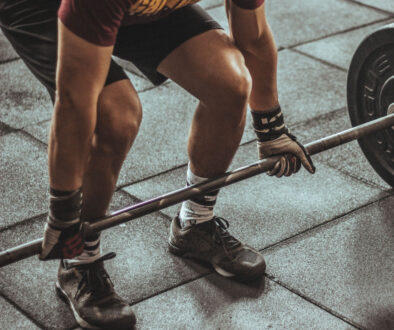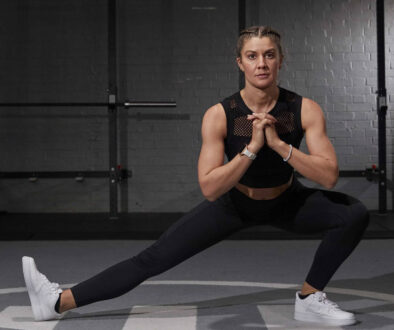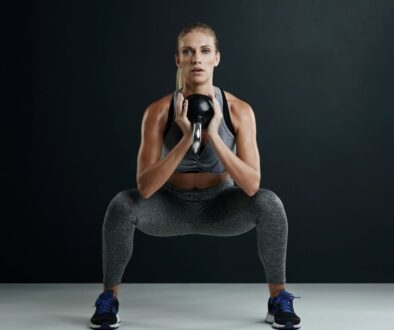How to Bulk Up As a Vegetarian – 4 Essential Points to Consider
Even with the likes of vegan bodybuilders such as Zack Belknap, Nimai Delgado, Jehina Malik, Maayan Eliasi, and a host of many others, who have proven to the world that it is possible to bulk up as a vegetarian, many people out there still think that being vegetarian and muscle building aren’t synonymous. The problem is, they are both right and wrong at the same time.

They’re right in the sense that an athlete who doesn’t eat meat should technically have a harder time bulking up under ordinary circumstances. But they are wrong because our bodies can actually bulk up without animal-based products like egg, and dairy for those on a vegan diet, and even meat, for strict vegetarians.
If you’re considering becoming vegetarian or vegan, or already are and want to bulk up your muscles, here are four ways to help you bulk up effortlessly.
1. Increase Your Calorie Intake
To grow large muscles on a plant-based diet, you need to increase the quality of your calorie intake. A lot of people think that calories equal gains, and that just isn’t true. The combination of macro and micronutrients is what gives athletes muscle gains.
The challenge is that vegetarians are used to eating specific portion sizes, and because animal products or meat in each serving are greater in terms of calories than plant-based foods, most vegetarians often find themselves in a state of a caloric deficit.
So, what’s the right proportion of plant-based calories for you to bulk up as a vegetarian? There are no specifics to that, but here is a simple formula you can use as a reference.
Daily Calories = Protein + Fats + Carbohydrates.
Essentially, it means that your daily caloric surplus shouldn’t just come from carbohydrates or fat alone but should consist of a combination of the three, to avoid any deficiency while trying to bulk.
Let’s look at the main calorific three sources.
A. Protein
As long as muscle growth is concerned, protein is the main block. Thus, while trying to bulk as a vegetarian, you do need to include a plant-based protein diet to your meal daily.
Here is a chart you can follow based on daily values(DV). These are recommendations for the first week.
| DAYS | PROTEIN SOURCE | PROTEIN PER CUP OR OZ | PROTEIN PER 100G | PROTEIN PER 200 CALORIES | RECOMMENDED DAILY SERVING |
|---|---|---|---|---|---|
| DAY 1 | Firm tofu | 43.5g with 87% DV | 17.3g with 35% DV | 24g with 48% DV | 1 Cup a day |
| DAY 2 | Lentils | 17.9g with 36 DV | 9g with 18% DV | 15.6g with 31% DV | 1-3 Cups a day |
| DAY 3 | Green Peas | 8.6g with 17% DV | 5.4 with 11% DV | 12.8g with 26% DV | 4 Cups a day |
| DAY 4 | Cooked Mushrooms | 3.9g with 8% DV | 3.6g with 7% DV | 27.5g with 55% DV | 2-4 Cups a day |
| DAY 5 | Low-fat unsweetened yoghurt | 14g with 28% DV | 5.7g with 11% DV | 20.5g with 41% DV | 1-2 Cups a day |
| DAY 6 | Quinoa | 8.1g with 16% DV | 4.4g with 9% DV | 7.3g with 15% DV | 3-5 Cups a day |
| DAY 7 | Non-fat cheddar | 9g with 18% DV | 32.1g with 64% DV | 40.9g with 82% DV | 1-3 Cups a day |
Information extracted from My Food Data
At the end of the 7th day, you can alternate the foods in the following weeks to come. Better still, you can add other plant-based protein sources like chia seeds, nutritional yeast, chickpeas, almond and seitan to the list.

B. Carbohydrates
Carbohydrates play a massive role in huge muscle gains because of its end product – glucose. As glucose is the body’s primary source of energy, without energy, you can’t engage in core weight lifting, which in turn will stimulate better muscle growth. Thus, given that you’re a vegetarian, you can make use of plant-based carbs with a high caloric content.
If you’re wondering what kind of carbs these would be, here is a chart you can use for the first week of your bulking journey.
| DAYS | CARBS SOURCE | CARBS PER CUP OR OZ | CARBS PER 100G | CARBS PER 200 CALORIES | RECOMMENDED DAILY SERVING |
|---|---|---|---|---|---|
| DAY 1 | Mashed sweet potatoes | 59.1g with 20% DV | 23.2g with 8% DV | 45.9g with 15% DV | 2-3 Cups a day |
| DAY 2 | Brown rice | 51.7g with 17% DV | 25.6g with 9% DV | 41.6g with 14% DV | 2-4 Cups a day |
| DAY 3 | Navy beans | 47.4g with 16% DV | 26.1g with 9% DV | 37.2g with 12% DV | 1-3 Cups a day |
| DAY 4 | Sliced banana | 34.3g with 11% DV | 22.8g with 8% DV | 51.3g with 17% DV | 4-7 Fingers a day |
| DAY 5 | Oatmeal | 28.1g with 9% DV | 12g with 4% DV | 33.8g with 11% DV | 1-3 Cups a day |
| DAY 6 | Raisins | 22.5g with 7% DV | 79.2g with 26% DV | 59g with 18% DV | 1-3 Handful a day |
| DAY 7 | Brown rice cakes | 14.7g with 5% DV | 81.5g with 27% DV | 41.6g with 14% DV | 3-5 Slices a day |
Information extracted from My Food Data

C. Fat
Not just fat, but healthy monosaturated fatty foods are made up of essential nutrients like omega-3 fatty acids EPA and DHA, which reduces inflammation and enhances quick muscle repairs. Plus, experts recommend that fat should make up 20% of one’s daily calorie intake.
As a vegetarian, you can make use of the sources of fat below as part of your daily caloric intake.
| DAYS | FAT SOURCE | FAT PER CUP, TBLSP, PIECE OR OZ | FAT PER 100G | FAT PER 200 CALORIES | RECOMMENDED DAILY SERVING |
|---|---|---|---|---|---|
| DAY 1 | Avocado | 29g with 45% DV | 15g with 23% DV | 18g with 28% DV | 3 Whole a day |
| DAY 2 | Macadamian Nuts | 22g with 33% DV | 76g with 117% DV | 21g with 32% DV | 1-2 Handful a day |
| DAY 3 | Salmon (fish) | 21g with 32% DV | 12g with 19% DV | 12g with 18% DV | 1-2 Fillet a day |
| DAY 4 | Peanut butter | 16g with 25% DV | 51g with 79% DV | 17g with 26% DV | 2-3 Tablespoon a day |
| DAY 5 | Flaxseed oil | 14g with 21% DV | 100g with 154% DV | 23g with 35% DV | 1-3 Tablespoon a day |
| DAY 6 | Dark Chocolate | 12g with 19% DV | 43g with 66% DV | 14g with 22% DV | 1-3 Whole Bar a day |
| DAY 7 | Soyabean (boiled) | 15g with 24% DV | 9g with 14% DV | 10g with 16% DV | 2-4 Cups a day |
Information extracted from My Food Data

Overall, make sure that most of your meals are whole. This should include nutrient-dense whole foods that supply your body with nutrients like omega-3 fatty (avocados, salmon), polyphenols (strawberries, blackberries), and chlorophyll (broccoli, spinach). These nutrients play a crucial role in bulking because they help in lowering inflammation and enhance speedy recovery.
However, you should know that there is an exception to all this. Bulking up using fat sources like avocado, works best for vegetarians who have low thyroid hormone. For those with high thyroid hormones, their bodies will bulk faster and respond better using complex carbohydrates such as sweet potatoes, rice, quinoa, etc.
So, please don’t buy into gimmicks and just copy what you see other people doing because there are so many factors involved in working out your optimal diet, such as age, weight, gender, thyroid hormone, testosterone levels, estrogen levels, etc., when it comes to bulking up as a vegetarian. To follow up on your caloric progress, do use websites like FatSecret, to determine the quantity of food you’re eating and which food is giving you the caloric boost to help you bulk.

2. Avoiding the Workout Plateau
Your form of training should always force your muscle to try and adapt frequently. Put differently; if you’re hitting the gym four days per week, and repeating the exact workout routine of let’s say 5 sets of 7 reps for the past five months or more, you shouldn’t expect to get bigger.
The thing is, especially for vegetarians who have conditioned their body system into staying off animal meats like steak, which are bodybuilding blocks, their body automatically becomes a magnificent adaptive machine due to their diet switch.
This means that as a vegetarian, it’s easy for your body to plateau, that is, it will stop responding to a workout because it has gotten used to it. However, if you keep changing and adapting your workout regimen from time to time, by bringing in new forms of exercise and intensity, you won’t reach this plateau.
For example, if you trained your triceps this week under a 6 reps of 5 sets routine, using a 15kg dumbbell pair each, after two weeks, you should switch it to 10 reps of 3 sets, using a pair of 17.5kg dumbbell each. Ideally, you should keep alternating the reps, set, and weights bi-weekly.
When it seems like you’ve run out of options in alternating them, you can make a switch into compound exercises like CrossFit for at least a month, before returning to isolation weight training.
Once your body needs to work harder to get a hold of your training pattern, you’ll hopefully start seeing visible muscle gains.
Gaining muscle mass isn’t just about working out the way you please. It’s about placing your muscle fibers on constant pressure and stress from all sorts of angles, by rendering shock to new places every time you train. Like Arnold Schwarzenegger said in his BluePrint to Mass Training Program, ” You have to keep shocking the muscle.”
The bottom line is, your body plateaus faster as a vegetarian. Thus, it would help significantly if you changed your workout routines frequently. You won’t be able to bulk up when your body has gotten used to your workout regimen.

3. Increase Your Intensity
As humans, everyone has their limits. However, we think we can’t do a lot of those things because we’ve conditioned ourselves to believe that. This is why we stop at a certain amount of repetitions when performing an exercise like biceps curl. We stopped because we made ourselves think we simply can’t go any further when in actual sense, we could have added a few more reps.
The truth is, the level of a workout intensity determines the size of muscle growth you’ll make.
For instance, there is a clear difference in the pump you’ll see after a chest workout of about 25 reps in 4 sets, against a much lesser pump which you’ll get doing 5 reps of 12 sets of the same chest workout. The bigger the pump, the higher your chances of building massive muscles when repaired. So, always strive to up your intensity.
And if it was 25 reps of 4 sets this week, step it up to 28-30 reps of 4 sets next week, and so on. That’s the progressive way to bulking up as a vegetarian, as well as a non-vegetarian.

4. Rest
After changing your workout routines, increasing the intensity, and maintaining your daily caloric surplus using dense whole plant-based foods, your muscles will need to rest in order to recover and come back big and strong. Without rest, it is impossible to bulk up, whether you’re a vegetarian or not. So, keep at least a day or two in between workouts as rest days.
If you trained your shoulders on Monday, avoid working it out again on Tuesday. Instead, you can train it on Wednesday, with Tuesday acting like the rest day. Avoid training the same muscle group daily, unless your fitness coach advises you to do so.
Final Thoughts
In a nutshell, whether you’re on a vegan diet, which requires you to do away with animal-based products like egg, dairy, or you’re vegetarian, which means you can’t go anywhere near animal meat, it is possible to bulk up. All you need to do is avoid reaching a workout plateau, up your workout intensity, increase your portion size with the aim of a caloric surplus, rest, and repeat the cycle.
And most importantly, don’t just copy other vegetarians, instead, find out what works for you, be it hormonal or age difference, and stick to that.











